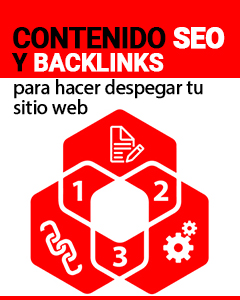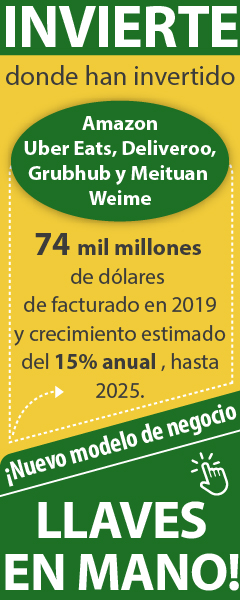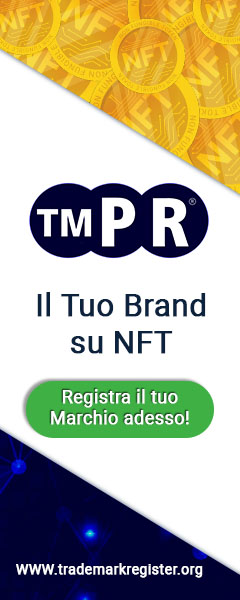
Table of Contents
An ICO is an Initial Currency Offer and is normally made by means of a Private Interest Foundation or an Offshore Company. Foundations are non-profit, while a Company is created for profit. There can be benefit s in both cases, although a Foundation has more prestige.
It’s not easy to launch an ICO, because a big monetary investment is necessary, not only for beginning but also for the marketing, development, and management. Further, projects with improbably ambitious “white papers” were presented in preceding years and were terminated unfinished, and this generated much fear and suspicions by more than a few toward ICOs. Showing that the plan is solid, backed by know-your-customer policies is key for the success of an ICO.
This is all you need to know about an Initial Currency Offer (ICO)
The Initial Currency Offer (ICO) is an operation where a business sells “tokens”, or rather digital coins based on the blockchain technology, to investors in order to raise the funds necessary for allowing them to develop a cryptocurrency. This operation has more than a few similarities with what would be a traditional Initial Public Offer (IPO), but it presents two notable differences: the investors , when acquiring tokens of this cryptocurrency, they aren’t buying the participation in a future company and the obtained has to be connected in some manner to the blockchain.
Ethereum, NEO and IOTA were some of the cryptocurrencies that began with an ICO and starting from the funds they obtained they were able to develop their projects.
What is an ICO token?
A token in an ICO can be considered the investor’s initial contribution. The logic is simple: the more money the investor hands over, the more tokens he will obtain. More than a few consider the tokens as equal to shares; however, that’s not how it really is, because with the former, the investor doesn’t own part of a business, like happens in the stock market. With the mentioned tokens, the investor will be able to buy future services offered by the business and he also has the possibility to sell these tokens.
Some tokens need, for their launching, a Private Interest Foundation structure, which helps the ICO’s credibility; although other tokens can be presented through standard commercial legal entities, like anonymous companies or corporations.
Another important legal step prior to the token’s launch is that the Foundation or offshore Company has to carry out Know-Your-Customer (KYC) procedures, so they can comply with anti-money-laundering laws. If they don’t carry out these procedures, the consequences can be disastrous, since the people behind the Foundation or offshore company, run the risk of breaking the law and, therefore, face prison.
On occasion, the ICO promoters deal with convincing professionals with tokens, in exchange for obtaining services necessary for the offer, like consulting and programming; however, this doesn’t always work, because professionals don’t usually accept tokens which, at this time, have no value on the market.
The way of controlling that the agreement in the ICO between the Foundation or Company that is launching the cryptocurrency and the holder of the token is through a smart contract. This type of agreement is on software, programmed so that if a certain agreed-upon action occurs, then the answer is automatically executed.
Advantages of an ICO
The ICO offers various advantages, for both the Foundation or Company that is launching the operation, and the investors.
A first advantage for the Foundation or Company is that they obtain the money that it needs without losing the control of the business. With an ICO they aren’t dividing shares with an investor but are selling him a future service.
Further, an ICO makes it possible to immediately raise money that comes from any part of the world, in a deregulation scenario, because the ICO doesn’t have to face the enormous traditional bureaucratic red tape whose resolution takes months of delay.
ICOs have represented a real change in the financial sector because they have opened up investments to a part of the citizenship that has been on the sidelines by the traditional economic systems.
Differences between an ICO and an OPI
The ICO has points in common with the IPO and also with crowdfunding.
Before contributing your shares through an IPO, a business is obligated to comply with various requirements, from having minimum earnings up to a history with no outstanding conflicts. The OPI can take a long time to resolve problems, because of the complexities of the legal procedures that surround this operation. Another of the requirements for a business in an IPO is the presentation of a brochure that contains precise information about the current state of this business, to help the investors in making their decisions. Working with lawyers and banks is essential in this process.
Since ICOs aren’t attached to any regulatory framework or legal protocol, the process is much faster. Unlike the OPI brochure, the “White Book” of the ICO has no standard format.
In an ICO, you only need Internet access for it to be possible to obtain tokens for any project, in any part of the world.
It can seem that IPO s are safer; however, these businesses can actually go bankrupt and the investment made will disappear; meanwhile, when facing an investment, it can be much more profitable and with less bureaucracy.
In regard to crowdfunding, there are also differences. In the ICO, the primary motivation of the investors is a possible return on their investments, whereas with funds collected in collection campaigns are essentially considered donations.
What is a DAO?
At the time of investing in an ICO, the person doesn’t obtain rights over the offshore Foundation or company that is behind the ICO; nonetheless, on occasion some projects are established as a Decentralized Autonomous Organization (DAO) and, in these cases, those who have tokens obtained the power of decision over the future of the project.
The DAO usually comply after the ICO. This organization makes it possible for those who have invested in tokens determine how the money collected during the ICO will be used. These determinations are reached through a system of proposals and votes by those who have access to the token holders.
What is an STO?
Despite their evident advantages, more than a few investors keep their suspicions about ICOs, because they feel that they are operations that are too risky. To deal with overcoming these suspicions various developers had the idea of creating Security Token Offers (STO), which was viewed to unite the best elements of an ICO and an IPO.
Just like what happens with ICOs, the STOs can be launched through a Private Interest Foundation or an offshore company.
In the STOs, the token holders have the right to receive dividends from the net profits that the Foundation or offshore company that is behind the project within a certain term. Further, doing everything in the blockchain, the system is more transparent than the current model of shares that is used in the traditional markets.
These characteristics obligate the STOs to apply a series of legal regulations that don’t exist in ICOs. For determining the profits and the division of the dividends, it’s necessary to have public accountant registries and undergo the control of financial agencies, to which other elements belonging to the businesses are added, that will be quoted in the stock market.
In the STOs, like in ICOs, the ability to decide that token owners have about the project will depend on whether a DAO is created or not. If a DAO exists, the token holders will logically have power over several aspects of the project.
Five steps to follow for launching an ICO
- Count on a legal structure (this means a Private Interest Foundation or an Offshore Company) to manage the project.
- Have an intelligent contract to manage and distribute the tokens.
- Create a landing page with a countdown for creating interest.
- Elaborate a white paper. This document contains clear and precise information about what the project deals with, which problem it hopes to resolve, how it will be resolved, the various financing stages, the number of tokens to be offered, what kind of money you will accept, how long the ICO campaign will last, and the roadmap implemented by the project.
- Count on a team of programmers, marketing specialists, attorneys and economists who will develop the project and create your tokens, meaning the cryptocurrency that will allow you to activate a crowdfunding, or in other words, collect funds in cryptocurrencies.
Main ICO regulations
One of the most appreciated and, at the same time, most controversial characteristics inside the ICOs is its lack of regulations. Several experts have considered that the implementation of regulations by countries will bottleneck the growth and development of the cryptocurrency and blockchain sector; meanwhile, others advocate for the establishment of regulations that grant greater legitimacy of these operations. Regarding these regulations, the traditional financial institutions will be more open to exploiting options in the ICOs.
The lack of regulations over ICOs has made it so that the developers don’t have to abide by a legal framework or follow a protocol determined by legislation at the time of selling the tokens. They simply present the “white paper” to the potential investor, with the most important information about the project, like the financial details, the team behind the project, and the roadmap.
The legal teams who support the Foundation or Offshore Company that launches the ICO has searched for a series of options so that the tokens aren’t seen as a value that can be adjusted by legal norms, although in more than a few countries – which we’ll analyze further ahead – it is more and more complicated to not include the tokens as an adjustable value.
There is no consensus around the world on how to lead with the increase in ICOs. Some countries, like South Korea and China, declared all ICOs illegal; meanwhile, in the United States, the SEC (Stock Exchange Commission) has warned possible investors to carry out due diligence before participating in an ICO. The SEC has also clarified that some ICO could be qualified as stocks or bonds and, in these cases, they could be subject to federal stocks and bonds regulations.
Between 2017 and 2018, there was a huge peak of non-regulated ICOs. In this period, various frauds that provoked more than a few doubts among future investors were produced. Stemming from this, several governments dealt with this by introducing laws that offer guarantees to users and respect the global and decentralized nature of cryptocurrencies.
In France, the Financial Markets Authority (FMA) adopted a regulatory approach based on an optional authorization mechanism, within the so-called Covenant Law. Therefore, the ICO promoters can request authorization from the FMA. This entity determines whether to issue the permit, in accordance with the white paper for each project. The list of ICOs that obtain permission is public and can be consulted by investors. Nonetheless, the ICOs that haven’t been authorized by the FMA aren’t prohibited, but the promoters are obligated to warn that this process can’t count on an endorsement by the regulatory entity.
The FMA has already approved France’s first ICO. The French- ICO company received the permit, which is valid for six months. The FMA assured that its objective was to help facilitate the industry and control doubtful projects and frauds. The new rules seek to guarantee the security of cryptocurrencies that will be issued, the compliance of standard money laundering procedures and the Know-Your-Customer practices, as well as the legal registration inside France.
Malta is known as the “blockchain island”, because of its friendly policies toward cryptocurrencies. Since 2018, they have approved three laws related to blockchains and cryptocurrencies: the Digital Innovation Authority Act, the Innovative Technological arrangements and Services Act, and the Virtual Financial Assets Act.
For Malta’s Financial Services Authority, the STOs are divided between the traditional ones and others. The traditional ones are stock market securities, such as bonds, stocks; meanwhile, the other STOs are a technological representation of values, similar to traditional values.
According to this Maltese legislation, the issuing companies that count on a legal personality to launch offers; meanwhile, the operators have to provide proof to verify that the tokens of that ICO are “virtual”, that no regulation of the financial market are applied to them or that the ones to which the European Union regulations are applied, enter into the MiFID financial instruments.
Meanwhile, Spain continues without expressly regulating ICOs; although they are subject to determined regulation, beginning with the Securities Market Act and the Investment services Act. Everything depends on how the cryptocurrency issued through an ICO as a “negotiable value” or as a “public offer” is understood. According to the volume and who directs the ICO, it will be regulated as a public offer, with its legal details or as an investment service. An ICO won’t be seen as a public offer for those who ask to purchase values for a minimum of 100,000 Euros, whenever it is directed by less than 150 people or investors.
The National Commission of the Stock Market (NCSM), which is the Spanish supervision organization, clarifies that the conditions for considering a token issued by an ICO as a negotiable value are that it attributes rights and hopes of a potential participation in the re-evaluation or profitability.
With everything analyzed, it’s possible to state that there have been legal advances regarding ICOs in Europe, even though understanding that the elaboration, discussion, and approval of a law is a long process, is also key. Further, just like cryptocurrencies are a disruptive technology, obstacles – mostly from conservatives – are increasing.
One of the most widespread visions among the regulators consists in forcibly introducing a new phenomenon, like cryptocurrencies, within the already existing regulatory framework and this ends by creating more problems instead of resolving them.
How to identify frauds in an ICO
The investors’ main fear in the face of an ICO is fraud. In the recent past, there haven’t been just a few cases of “businesses” that have collected huge amounts of money from trusting investors and then they disappeared, with the money and without a trace
So then, how can we recognize a possible fraud in an ICO? There are four elements for which any investor should pay the greatest attention.
The first is the configuration of the team of the Foundation or Company launching the ICO. When this team is anonymous or no important details about who is part of the Foundation or Company appear, then it’s an extremely strong danger alert.
Knowing this development team and its prior experience in the cryptocurrency sector is key.
Another indication of possible fraud is when the investor has an ICO that proposes an investment return that is much greater than the average. The idea of earning more money in less time always seems attractive, but it is also another warning sign. This is why it’s important to review the ICO’s terms and conditions. A completely legitimate ICO always specifies exactly what the investor’s rights will be.
And last, the investor must pay attention to the long-term plans that the development team of the ICO proposes. What “roadmap” the project will follow must be clearly described in the White Book. If the only thing that appears is that the project will be “spectacular”, a “total success”, it would be prudent to think more than twice before putting even one cent there.









